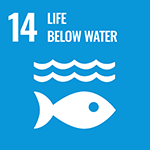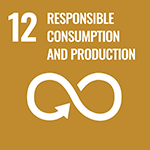Continuous Operation System for Microalgae Production Optimized for Sustainable Tropical Aquaculture (COSMOS)
Principal Investigator
-


Prof.
Department of Science and Engineering for Sustainable Innovation, Faculty of Science and Engineering, Soka University
TODA Tatsuki


Prof.
Institute of Bioscience (IBS), Universiti Putra Malaysia (UPM)
Fatimah MD. Yusoff
ODA Recipient Country
Malaysia
Research Institutions in Japan
Soka University / The University of Tokyo / National Institute for Environmental Studies / Tokyo Institute of Technology
Research Institutions in Counterpart Country
Universiti Putra Malaysia / Universiti Malaysia Terengganu / Universiti Selangor
Adoption fiscal year
FY 2015
Research Period
5 Years
Overview of the Research Project
Discovering and mass-culturing high-value microalgae using new technologies
Microalgae are capable of producing powerful antioxidants such as astaxanthin. Both aesthetically and functionally beneficial, they are truly worthy of the title “aquatic jewels.” Malaysia is one of the most biologically diverse nations, and habitat to a vast population of microalgae species. Our goal is to establish advanced microalgae mass-culture reactors suited to tropical ecoclimate conditions using targeted high-value microalgae coupled with innovative growth-promoting substances from Malaysia.
Contributing to the development of environmentally-friendly aquaculture industries through innovative microalgae mass-culture technologies
The rapid growth of aquaculture industry has led to the discharge of large volumes of sludge and sewage into the natural environment causing degradation to ecosystems. The proactive recovery of rich nutrients from the sludge and sewage can be utilized for the mass-culturing of high-value microalgae species, empowering a new recycling system that provides economic incentive while simultaneously preserving the natural ecosystem.
Photo gallery
Under certain condition, haematococcus algae (left) accumlate highly valuable astaxanthin (right). Microalgae are truly “aquatic jewels.”
Research Project Web site
Press Release
Links
Projects
Contact Us
Japan Science and Technology Agency (JST)
Department of International Affairs
SATREPS Group
TEL : +81-3-5214-8085
Related articles by Category
- Bioresources
Bioresources
 Republic of Uganda
Republic of Uganda
Development and Promotion of Sustainable Perennial Rice Production System Using Multiple Crop Harvesting Technologies
- Malaysia
Environment / Energy
(Global-scale environmental issues)
 Malaysia
Malaysia
Recover water, electric power, and mineral resources from palm oil mill effluent!
Development of Palm Oil Mill Effluent (POME) Treatment System for Sustainable Energy Production and Resource Recovery based on Material Innovation
- Asia
Environment / Energy
(Carbon Neutrality)
 Socialist Republic of Vietnam
Socialist Republic of Vietnam
Regenerating cassava farm land by storing carbon in the soil!
Transforming the Cassava Production System in Vietnam by Establishing Regenerative Farming and Smart Starch Supply Chain Management
- SDGs : Goal.14
Environment / Energy
(Global-scale environmental issues)
 Arab Republic of Egypt
Arab Republic of Egypt
Contributing to the reduction of marine plastic litter and the establishment of a circular economy!
Utilization of Agricultural Wastes for Plastic Alternatives Productions to Establish a Circular Economy




















